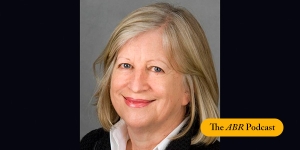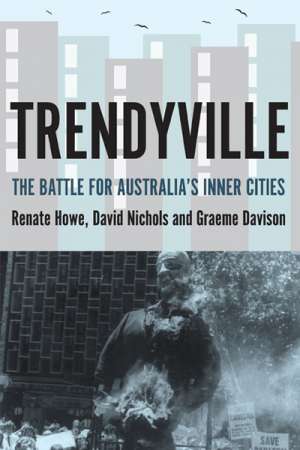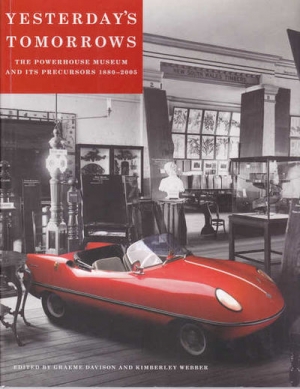Graeme Davison
In this week’s ABR Podcast, Marilyn Lake reviews My Grandfather’s Clock: Four centuries of a British-Australian family by historian Graeme Davison. Lake argues that Davison has produced an ‘uncommonly good family history’, in part because of the broader history he tells. Marilyn Lake is an Honorary Professorial Fellow in History at the University of Melbourne. Listen to Marilyn Lake’s ‘The ancestors: An uncommonly good family history’, published in the November issue of ABR.
... (read more)Marilyn Lake reviews 'My Grandfather’s Clock: Four centuries of a British-Australian family' by Graeme Davison
With My Grandfather’s Clock: Four centuries of a British-Australian family, historian Graeme Davison has offered his readers and bequeathed to his grandchildren a very special book, at once genealogy, travelogue, memoir, broad social history, and a meditation on the sources of personal identity. It is a book to be treasured.
... (read more)Graeme Davison reviews 'Emperors in Lilliput: Clem Christesen of Meanjin and Stephen Murray-Smith of Overland' by Jim Davidson
‘In Sydney if you have something to say you hold a party; in Melbourne you start a journal,’ quipped the poet and critic Vincent Buckley in 1962. Buckley was an acute, astringent observer of the literary culture of the two cities. An outsider in both, he recognised Melbourne’s characteristic voice – ‘earnest, do-gooding, voluble’ – in the leftish humanism of its leading literary journals, Clem Christesen’s Meanjin and Stephen Murray-Smith’s Overland. Not for Melbourne the anarchic frenzies of the Bulletin, the Sydney Push and Oz. While Sydney had the best poets, Buckley contended that the southern capital had the most influential opinion makers.
... (read more)Graeme Davison reviews 'Asbestos in Australia: From boom to dust' edited by Lenore Layman and Gail Phillips
Wittenoom is no more. The notorious mine has been abandoned and the township, ten kilometres away across the Pilbara, has been demolished and buried. The name has been erased from road signs along Route 95. Blue asbestos – the mineral that created and then condemned the place – is still virulently present in its soil, air, and water. But while Wittenoom is no mo ...
Tom Griffiths reviews 'Hugh Stretton: Selected writings' edited by Graeme Davison
This is a deeply rewarding and timely book. Hugh Stretton (1924–2015) was one of Australia’s finest public intellectuals, a historian, ABC Boyer Lecturer, and social democrat with a steely mind and a calm, clear voice of wisdom. Stretton spent thirty years arguing thoughtfully against neoliberalism, a critique he developed ...
... (read more)Frank Bongiorno reviews 'Trendyville' by Renate Howe, David Nichols, and Graeme Davison
In the Melbourne suburb where I spent my childhood, a café was a place where ethnic men played cards and backgammon, puffed on cigarettes, and looked up from time to time to watch through the window the passing parade on the footpath outside. Now, when I return to Northcote, I am often served in hip cafés by boyish men with Ned Kelly beards and stylishly informal ...
Clear-eyed, unsentimental, but compassionate, with a nicely honed flair for story-telling, Graeme Davison is one of Australia’s master historians. Now Emeritus Professor of History at Monash University, his early training was in R.M. Crawford’s so-called Melbourne History School, where it was simply assumed that books would be written. Crawford’s department at ...
Brenda Niall reviews 'University Unlimited: the Monash Story' by Graeme Davison and Kate Murphy
For a young academic in need of a job, 1964 was a lucky time. After three pioneering years with small enrolments, Monash University was bracing itself for the first big influx of postwar baby boomers. Above the flat and muddy stretches of Clayton farmland, where Wellington boots had been the footwear of choice, the first tall buildings were emerging. The Arts wing of the twelve-storey Robert Menzies School of Humanities was in pristine state when I moved into Room 727 in the department of English, on the seventh floor.
... (read more)John McPhee reviews ‘Yesterday’s Tomorrows: The Powerhouse Museum and its precursors 1880–2005’ edited by Graeme Davison and Kimberley Webber
A book we have all been waiting for, a history we have all needed, should be assured success. In the Australian museum world, such a publication should garner acclaim, yet this review will fail to deliver the praise it anticipates. My lack of enthusiasm is not because the editors have failed to do a good job. In fact, they have brought together a wide-ranging series of essays that fascinate and illuminate just as one might wish. Telling the story of the Museum’s complex history, from its foundation in 1880 as the Industrial, Technological and Sanitary Museum, which became the Museum of Applied Arts and Sciences in 1950 and, in 1988, the Powerhouse Museum, Yesterday’s Tomorrows captures the changing times and purpose of the institution.
... (read more)Gideon Haigh reviews 'Car Wars: How the car won our hearts and conquered our cities'
To read this story of ‘how the car conquered our hearts and conquered our cities’ is to feel invited – to reflect, as its author Graeme Davison does in his introduction, on one’s own relationship with the automobile. And it requires immediate admission: mine is minimal. I do not, cannot, and probably never will drive a car. I am noted among friends for a casual attitude to such niceties as locking doors. Only with difficulty have I mastered the operation of a petrol bowser.
... (read more)









